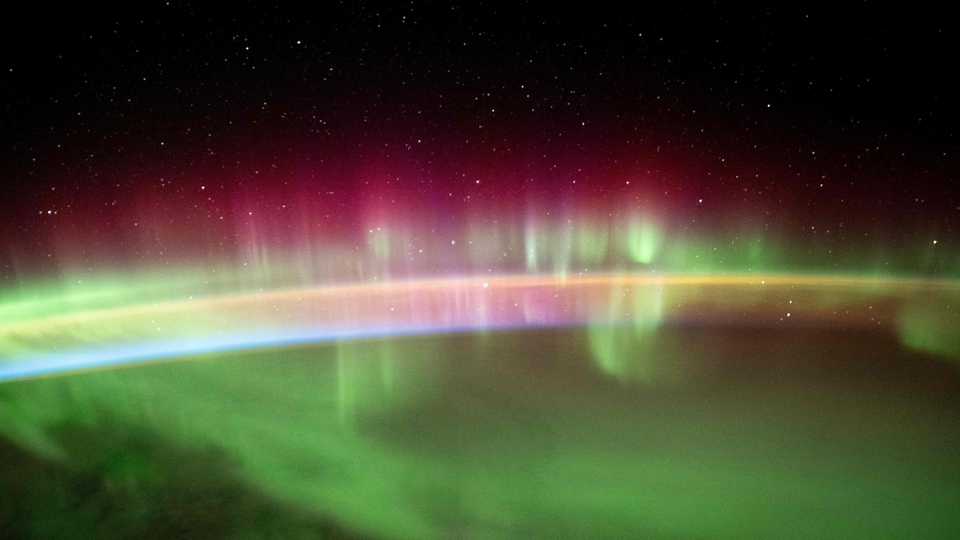Beautiful but deadly! Research shows ozone layer depletion due to the Northern Lights - the Aurora Borealis
Beautiful but deadly! Research shows ozone layer depletion due to the Northern Lights - the Aurora Borealis

Everyone has seen photos, videos or heard of the beautiful Aurora Borealis, commonly known as the Northern Lights. These mesmerizingly colourful, dancing waves of light have captivated people for millennia. Though it was Italian astronomer Galileo Galilei who coined the name "aurora borealis" in 1619 — after the Roman goddess of dawn, Aurora, and the Greek god of the north wind, Boreas — the earliest record of the northern lights was found in a 30,000-year-old cave painting in France.
However, beautiful as they are, the Northern Lights are now suspected of being deadly too. Research has shown that the very phenomenon that gives birth to the aurorae also in turn causes mesospheric ozone layer depletion. Unfortunately, for the inhabitants of Earth, this could have a stark impact on global climate change, ANI reported.
Also read: Looking for a smartphone? Check Mobile Finder here.
A scientists led by Prof. Yoshizumi Miyoshi from Nagoya University, Japan have observed, analyzed, and provided greater insight into this phenomenon. These findings have been published in the journal Nature's Scientific Reports.
At any given moment in time, the Sun ejects millions of electrons from its Corona, or upper atmosphere creating Solar Wind. These particles slam into the Earth's ozone layer and get trapped in the magnetosphere, the magnetic field around the Earth. Interactions between electrons and plasma waves can cause the trapped electrons to escape and enter the Earth's upper atmosphere (thermosphere). This is known as precipitation, and it is responsible for the aurorae. But this also leads to local ozone layer depletion in the layer below, namely the mesosphere. This has a certain impact on the global climate. Scientists have studied electron precipitation in relation to aurorae, but none till now have been able to sufficiently elucidate how it causes mesospheric ozone depletion.
Prof. Miyoshi and the team took the opportunity to change this narrative during a moderate geomagnetic storm over the Scandinavian Peninsula in 2017.
They aimed their observations at "pulsating aurorae" (PsA), a type of faint aurora. Their observations were possible through coordinated experiments with the European Incoherent Scatter (EISCAT) radar (at an altitude between 60 and 120 km where the PsA occurs), the Japanese spacecraft Arase, and the all-sky camera network.
Arase data showed that the trapped electrons in the Earth's magnetosphere have a wide energy range. It also indicated the presence of chorus waves, a type of electromagnetic plasma wave, in that region of space.
Computer simulations then showed that Arase had observed plasma waves causing precipitation of these electrons across the wide energy range, which is consistent with EISCAT observations down in the Earth's thermosphere.
Analysis of EISCAT data showed that electrons of a wide energy range, from a few keV (kilo electron volts) to MeV (mega electron volts), precipitate to cause PsA. These electrons carry enough energy to penetrate our atmosphere to lower than 100 km, up to an ~60 km altitude, where mesospheric ozone lies.
In fact, computer simulations using EISCAT data showed that these electrons immediately deplete the local ozone in the mesosphere (by more than 10%) upon hitting it.
Prof. Miyoshi explains, "PsAs occur almost daily, are spread over large areas, and last for hours. Therefore, the ozone depletion from these events could be significant."
Speaking of the greater significance of these findings, Prof. Miyoshi continues: "This is only a case study. Further statistical studies are needed to confirm how much ozone destruction occurs in the middle atmosphere because of electron precipitation. After all, the impact of this phenomenon on the climate could potentially impact modern life."
Catch all the Latest Tech News, Mobile News, Laptop News, Gaming news, Wearables News , How To News, also keep up with us on Whatsapp channel,Twitter, Facebook, Google News, and Instagram. For our latest videos, subscribe to our YouTube channel.

























